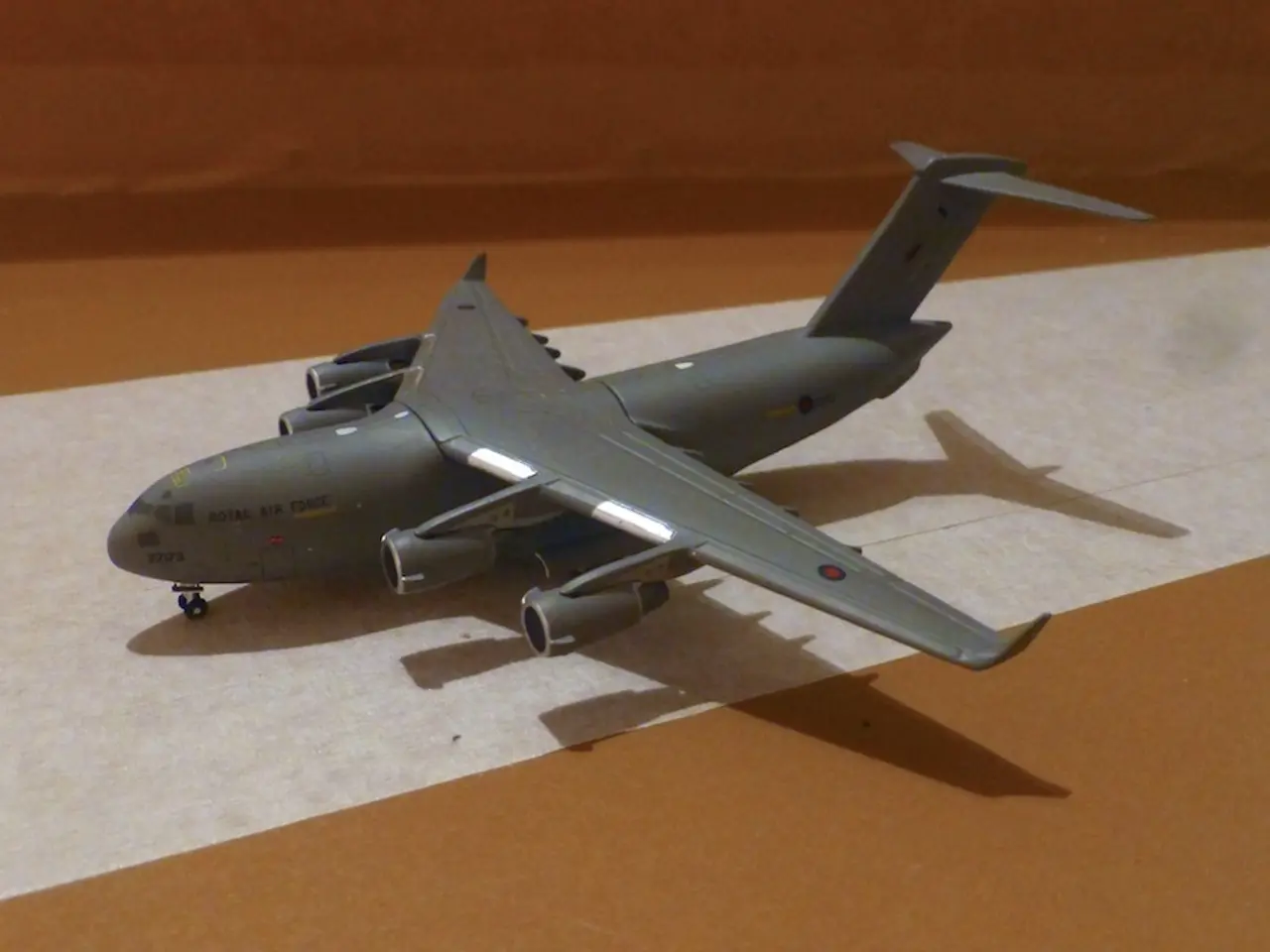New Developments in Drone Propulsion Systems
==================================================================
The world of drones is on the cusp of a revolution, as new thrust technologies are poised to redefine what these unmanned aerial vehicles (UAVs) can achieve. From electric ducted fans (EDFs) and hybrid-electric propulsion systems to miniature jet engines and AI-driven adaptive thrust optimization, these advancements are set to enhance drone performance by increasing efficiency, flight duration, payload capacity, stealth, and maneuverability.
Electric Ducted Fans (EDFs)
One of the key innovations in the drone propulsion landscape is the electric ducted fan (EDF). EDFs offer a compact, aerodynamic, and quieter alternative to traditional open rotors by accelerating airflow through a duct to generate thrust. This design enables higher thrust-to-size ratios and reduced noise, making EDFs ideal for stealth operations, hybrid VTOL drones, and applications requiring better directional control. However, EDFs are less efficient at low speeds but excel in mid- to high-speed flight regimes.
Hybrid-Electric Propulsion
Another significant development is the integration of hybrid-electric propulsion systems, which combine electric and conventional engines. This approach enhances mission endurance and stealth by lowering acoustic and infrared signatures while simplifying maintenance with modular battery packs. Notable examples include DARPA’s XRQ-73 SHEPARD hybrid demonstrator, which boasts multi-hour loitering capabilities with stealth, and Honeywell’s 1 MW turbogenerator, which powers heavy cargo drones with distributed electric motors. These systems support military applications requiring silent ingress and rapid maintenance turnaround.
Miniature Jet Engines and Modular Designs
New drones like the UK’s SkyShark incorporate miniature jet engines alongside electric ducted fans in twin-engine setups to achieve ranges up to 250 km with speeds over 450 km/h and adaptable modular payloads. Modular thrust configurations support mission-specific customization and cost-effective mass production.
AI-Enhanced Thrust Optimization
Emerging adaptive thrust management using artificial intelligence enables real-time optimization of propulsion efficiency and responsiveness, especially for complex autonomous or swarm drone applications requiring quick thrust adjustments and self-diagnostics.
Advanced Propeller Designs
Innovations such as folding propellers are being tested in DARPA’s runway-independent drone programs to improve compactness, stealth, and multi-mode flight capabilities like hovering and high-speed cruising (400–450 knots). These designs support agile combat and special operations missions.
Implications for the Drone Industry
The forecasted developments in emerging thrust technologies for drones center on electric ducted fans, hybrid-electric propulsion systems, miniature jet engines, AI-driven adaptive thrust optimization, and innovative drone designs like folding props. These technologies aim to enhance drone performance by increasing efficiency, flight duration, payload capacity, stealth, and maneuverability, with significant implications for both military and commercial drone sectors.
The shift towards these advanced propulsion technologies will have several key implications for the drone industry:
- Expanded operational capabilities: Longer endurance, heavier payloads, quieter operation, and higher speeds enable drones to perform more complex and sensitive missions across military, commercial, and civilian sectors.
- Increased demand for modularity and scalability: Thrust technology innovations promote flexible, upgradeable drone platforms tailored to specific missions or environments.
- Market growth and competitive advantage: The UAV propulsion market is projected to grow significantly (to $17.47 billion by 2030), driven by the integration of electric and hybrid systems, pushing manufacturers to partner with battery, inverter, and thermal management specialists.
- Enhanced stealth and survivability: Lower acoustic and IR signatures from advanced thrust systems improve drone survivability in contested environments, critical for defense applications.
- Shift toward autonomous and swarm operations: Rapid thrust response and self-diagnosis capabilities are essential for mass-produced autonomous swarm drones designed to overwhelm defenses.
IPET Systems, Ion Propulsion, and AI Integration
IPET (Intelligent Propulsion for Electric Technology) systems are designed for applications where performance, uptime, and reliability are non-negotiable, built with enterprise-grade drones in mind. Ion propulsion offers an exciting vision for the future of drone flight, particularly in applications where noise reduction and low maintenance are paramount. The integration of AI and data-driven controls further enhances safety, especially in automated or remote operations.
Tilt-Rotor Systems
Tilt-rotor systems are already being used in cargo delivery drones, eVTOL air taxis, and long-range reconnaissance UAVs. These systems allow a drone's motors or entire wings to pivot between vertical and horizontal orientations, enabling both vertical takeoff and efficient forward flight.
In conclusion, emerging thrust technologies are catalyzing a paradigm shift in drone propulsion, enabling more efficient, mission-tailored, and stealthy UAVs poised to redefine the drone industry's future landscape. These advancements will undoubtedly pave the way for new applications, expanded capabilities, and a more integrated and efficient drone ecosystem.
[1] DARPA. (2020). Tactile Boom Truck (Tactile). Retrieved from https://www.darpa.mil/program/tactical-boom-truck
[2] Honeywell. (2020). Honeywell Aerospace. Retrieved from https://www.honeywell.com/us/en/aerospace
[3] SkyShark. (2020). SkyShark. Retrieved from https://skyshark.co.uk/
[4] DARPA. (2020). Air Cavalry. Retrieved from https://www.darpa.mil/program/air-cavalry
[5] DARPA. (2020). Gremlins. Retrieved from https://www.darpa.mil/program/gremlins
Technology advancements in drone propulsion, such as Electric Ducted Fans (EDFs) and hybrid-electric propulsion systems, are poised to revolutionize the performance of drones by increasing efficiency, flight duration, payload capacity, stealth, and maneuverability. The integration of AI-driven adaptive thrust optimization further enables real-time optimization of propulsion efficiency and responsiveness for complex autonomous or swarm drone applications.




